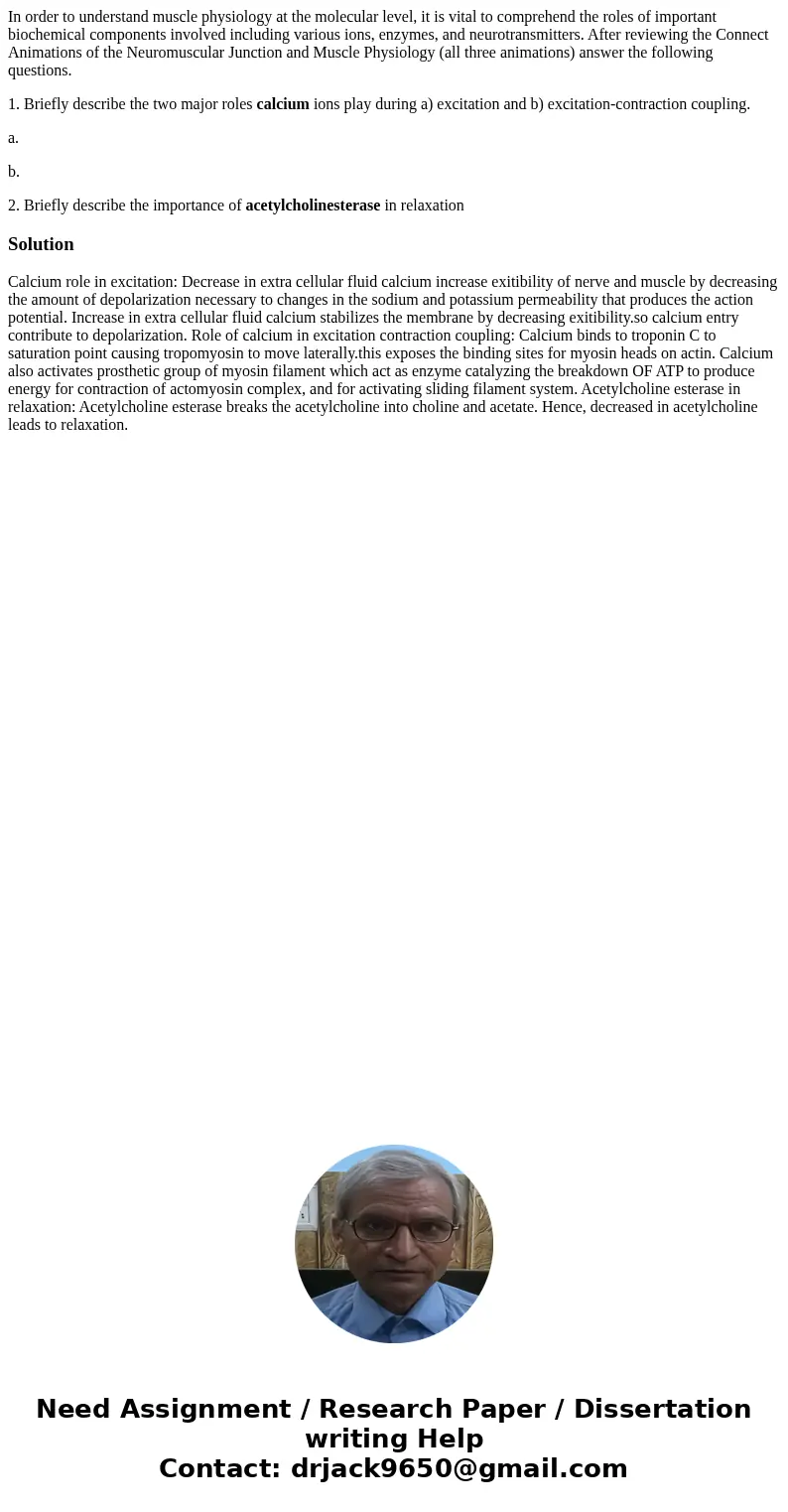In order to understand muscle physiology at the molecular le
In order to understand muscle physiology at the molecular level, it is vital to comprehend the roles of important biochemical components involved including various ions, enzymes, and neurotransmitters. After reviewing the Connect Animations of the Neuromuscular Junction and Muscle Physiology (all three animations) answer the following questions.
1. Briefly describe the two major roles calcium ions play during a) excitation and b) excitation-contraction coupling.
a.
b.
2. Briefly describe the importance of acetylcholinesterase in relaxation
Solution
Calcium role in excitation: Decrease in extra cellular fluid calcium increase exitibility of nerve and muscle by decreasing the amount of depolarization necessary to changes in the sodium and potassium permeability that produces the action potential. Increase in extra cellular fluid calcium stabilizes the membrane by decreasing exitibility.so calcium entry contribute to depolarization. Role of calcium in excitation contraction coupling: Calcium binds to troponin C to saturation point causing tropomyosin to move laterally.this exposes the binding sites for myosin heads on actin. Calcium also activates prosthetic group of myosin filament which act as enzyme catalyzing the breakdown OF ATP to produce energy for contraction of actomyosin complex, and for activating sliding filament system. Acetylcholine esterase in relaxation: Acetylcholine esterase breaks the acetylcholine into choline and acetate. Hence, decreased in acetylcholine leads to relaxation.
 Homework Sourse
Homework Sourse